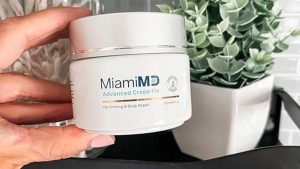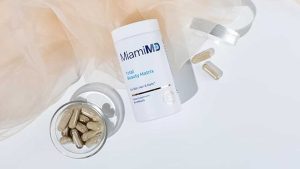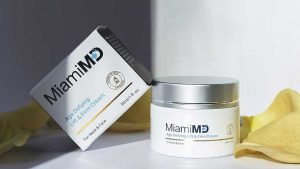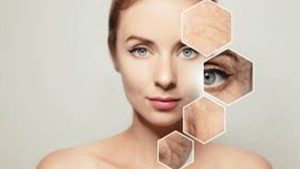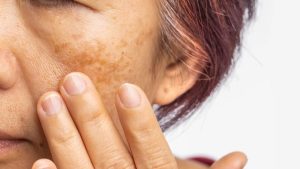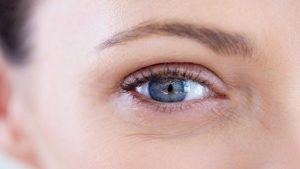Is Humidity Good for Skin?
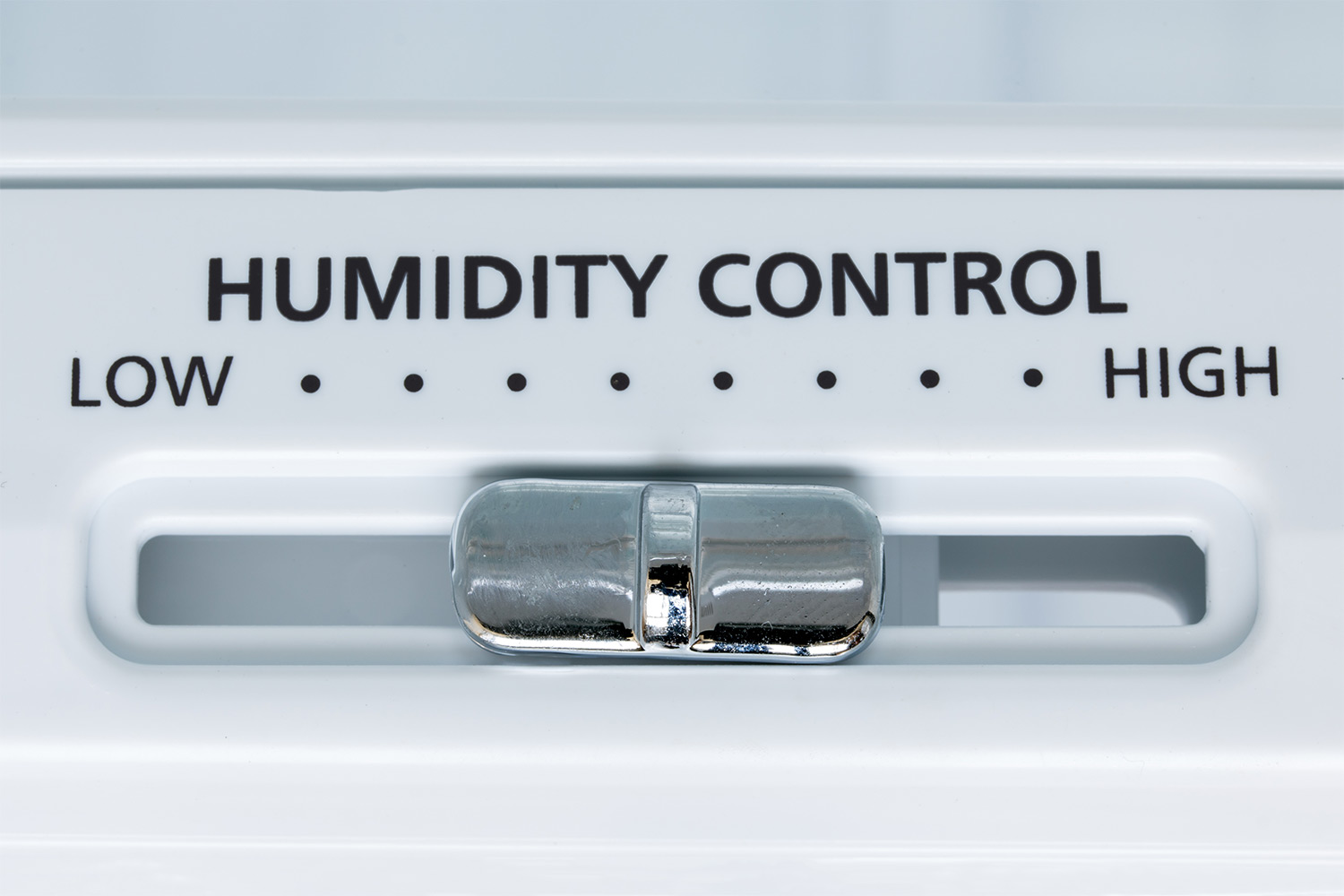
The concept of humidity is one that most people correlate with negative things, like days too hot to go outside and unruly hair. But humidity does not have to go hand-in-hand with heat, and when used the right way, it may have benefits for your skin’s overall health and appearance.
Is humidity good for skin? How can you use it properly? We’ve got all the answers you need to harness humidity and make it work for you.
What Is Humidity?
If you’ve heard of humidity but aren’t quite sure what it is, we want to give you the basics. That way, you can better understand how it works and how you can use it to help your skin look and feel its best.
Essentially, humidity is the concentration of invisible water vapor that is present in the air. When the amount of water vapor increases, the air starts to become packed and crowded. The percentage of humidity directly impacts how much room remains for other molecules, which is why we often feel “wet” or “sticky” in high humidity environments.
In addition, if you’ve ever noticed that you seem to sweat more when the humidity is high, this is because there isn’t enough room left in the air for it to evaporate. Most people feel comfortable at around a 45% humidity level.
While humidity isn’t tied directly to temperature, there is a positive correlation. Higher temperatures tend to have more room for increased water vapor, so that’s why it is often more humid when it is hotter outside.
Relative Humidity
In addition to the standard humidity level, there is a subconcept known as relative humidity. When we look at how humidity impacts the skin, both positively and negatively, we refer more to relative humidity as a reference range.
The relative humidity is the amount of water vapor in the air (humidity level) compared to how much the air can hold without experiencing condensation.
When we talk about making changes to support the skin, we measure how much water we can put into the air before turning into visible water. This rate is crucial because you don’t want to put too much water into the air and inadvertently damage your home.
How Does Humidity Impact The Skin?
Research has shown that environmental factors like humidity, temperature, and ultraviolet radiation can significantly impact the skin. But how exactly does that work?
It comes down to humidity’s impact on the skin’s moisture barrier (or stratum corneum). The moisture barrier is the very top level of the epidermis and is responsible for helping to maintain the delicate balance of water in the skin.
The body prefers humidity between 30 and 50%, so anything outside of that range can impact the moisture barrier’s ability to keep that balance.
Low Humidity’s Impact on the Skin
To help you better understand how humidity can impact the skin, let’s start by looking at low humidity. Low humidity occurs when the percentage of water vapor in the air is less than 40%.
When we talk about low humidity climates, we talk about some of the drier areas of the country. Las Vegas, Nevada, for instance, is one of the cities in the United States with the lowest amount of humidity.
Phoenix, Arizona, Denver, Colorado, and Albuquerque, New Mexico also have relatively low humidity levels.
For most people, living in an area with low humidity sounds like a dream. However, humidity that is too low can harm your skin. Low humidity can be especially harmful to those with already dry skin.
With so little natural water in the air, the skin has a much harder time replacing lost moisture and maintaining a healthy moisture balance. Ultimately, over time, dry skin will continue to get drier in low humidity environments.
Low humidity can also lead to skin that is less capable of ridding dead skin cells from its surface. As the dead skin cells build up, they can make the skin look dull and even form a barrier that keeps additional moisture from getting in.
Other symptoms of overly dry skin may include redness, itchiness, flaking, chapping, and even an increase in the risk of skin tearing or wounds. You can also lose elasticity, leading to an increase in the appearance of fine lines and wrinkles and making the skin appear older than it should.
High Humidity’s Impact on the Skin
Of course, it isn’t just a lack of humidity that causes problems with the skin. High humidity levels (when the water vapor percentage is greater than 55%) can also cause problems.
Overall, though, high humidity is far better for the skin than low humidity. Areas like New Orleans, Louisiana, Jacksonville, Florida, and Houston, Texas, have some of the highest humidity levels in the country.
One of the ways that higher humidity levels can negatively impact the skin is by increasing the amount of sebum it produces. While some sebum is healthy for the skin and helps keep it protected, too much can leave it looking and feeling oily.
Unfortunately, the negative impacts of excess sebum don’t stop there. If you remember much about how clogged pores happen, they result from debris and bacteria being trapped inside by a combination of dead skin cells and oil.
There are also some positive effects of having a higher humidity level, even higher than optimal. High humidity levels mean an increase in hydration and even a potentially quicker skin cell turnover rate. These factors can also help your skin by having an anti-aging effect, keeping it looking younger, firmer, and more radiant.
If you live in either a high or low humidity environment, learning how to cope with those changes in moisture level can help you keep your skin healthy.
Coping With Low Humidity Environments
To cope with lower humidity levels, you need to find ways to add extra moisture to your skin.
The most important way that you can do this is by finding a rich, supportive moisturizer. You’ll need to purchase a moisturizer that can not only draw moisture to the skin but trap it inside as well.
Ingredients like hyaluronic acid, ceramides, and glycerin deliver the most bang for your buck when it comes to hydration. If you’re dealing with fine lines and wrinkles resulting from your skin’s dryness, try our Age-Defying Lift & Firm Cream or other collagen-boosting products to help reduce their appearance.
Dealing With High Humidity Environments
While the type of facial cleanser you use is not as crucial for those in low humidity areas, it is in those with higher humidity. Because a high moisture level has been tied to an increase in sebum, counteracting it requires a targeted approach.
Invest In A Cleanser
You’ll want to invest in a cleanser that is good at helping remove extra oil from the skin without risking additional clogged pores. Follow that cleanser up with a moisturizer, but choose one that supports the skin differently.
You don’t need a heavy moisturizer when the humidity is high, but you will want to use a lighter one to provide the skin with hydration. It is a common misconception that oily skin makes its own moisture and that you don’t need to boost that level with skincare products.
While sebum does provide some amount of hydration and protection, it does require at least some assistance to provide the most moisture possible.
If the high humidity environment you live in is also one where it tends to be warmer, take steps to make sure that sweat doesn’t just sit on your skin. After a workout, or even when coming back in from being outside, try to at least rinse your face with lukewarm water or even take a shower.
Dried sweat is just one more factor that can lead to clogged pores and breakouts, so removing it quickly can help keep your skin clear and healthy.
If you still deal with blemishes and breakouts, you can add other skincare products into your routine to help. Both alpha- and beta-hydroxy acids like glycolic and salicylic acid can help break down both oil and dead skin cells, keeping the pores more clear and the skin more resilient.
In addition, do what you can to avoid touching your face as much as you can. Every time you touch your face, you risk transferring potential bacteria from your fingertips to your pores.
When To Apply Moisturizer
In addition to choosing the right moisturizer, you also need to know when to apply it.
When dealing with dry skin and low humidity, it’s best to use your moisturizer when your skin is still wet (preferably right after a shower or washing your skin). Doing this allows you to trap that moisture inside your skin, giving it even more of a chance to reverse dehydration.
But dehydration doesn’t just happen from the outside.
Counteracting dehydration is also something you need to do from the inside as well. Even when it’s not hot outside, drinking plenty of water helps give your entire system what it requires to function at its best.
Don’t Forget To Exfoliate
To help fight the build-up of dead skin cells on the skin’s surface, you may want to use an exfoliant. If you already use an exfoliant, make sure to be consistent with it. Exfoliants can help to break down the bonds between the dead skin cells.
Without these bonds, it becomes much easier to remove them from the skin.
Humidifiers can also help increase the humidity level in your home and put necessary water vapor back into the air. Keeping the air between 30 – 50% is thought to be best for the skin. However, be aware that you need to clean your humidifier or risk mold developing inside them.
Many also have filters that need to be changed regularly, which help to stop allergens from circulating and triggering allergies.
In Summary
Is humidity good for the skin? If you know how to keep it in an optimal range for your skin, it absolutely can be. The skin prefers to be kept in an environment with between 30 to 50% humidity, but we often don’t control that.
To help, be aware of ways to help adjust the humidity level around you and other ways to help counteract either high or low humidity.
Miami MD is here for you and your skin, no matter where you live and what the humidity level might be there. We’d love to help you keep your skin looking youthful and radiant, which is why we offer functional beauty products to help you achieve all of your skincare goals.
Sources:
Humidity | National Geographic Society
